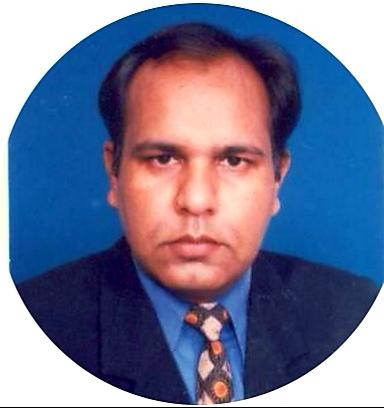By: Sohail Yousaf
The Sistine Chapel, world-renowned for its Renaissance art, serves a vital purpose in the life of the Catholic Church: it is the sacred venue where each new pope is elected. During a papal conclave, a temporary chimney is installed on the roof of the chapel, from which smoke signals indicate the outcome of the election. If a new pope has been chosen, white smoke—produced by burning the ballots alone—rises into the sky. If no decision is reached, the ballots are mixed with chemicals such as potassium perchlorate, anthracene, and sulfur to emit black smoke. Conversely, the white smoke that signals a successful election is created by combining the burned ballots with potassium chlorate, lactose, and chloroform resin.
The first papal conclave held in the Sistine Chapel took place from August 6 to 11, 1492, and resulted in the election of Pope Alexander VI, born Rodrigo Borja.
On March 13, 2013, Cardinal Jorge Mario Bergoglio of Buenos Aires, Argentina, was elected the 266th pope, choosing the name Francis. He became the first Latin American and the first Jesuit to hold the office. Pope Francis served until his death on April 21, 2025. Vatican physician Dr. Andrea Arcangeli confirmed in the official death certificate that the Pope died of a stroke and irreversible heart failure.
Born on December 17, 1936, Jorge Mario Bergoglio was the eldest of five siblings. His father, Mario, was an accountant; his mother, Regina, was described as a devoted and committed wife in Vatican records. At the time of his election in 2013, he had one surviving sibling: a sister, María Elena Bergoglio, then 64 years old.
Pope Francis will be remembered as a humble yet resolute spiritual leader who left a legacy of inclusion, reform, and moral courage. His papacy, which spanned over 1.4 billion Catholics worldwide, was marked by a strong commitment to welcoming the marginalized—especially women, immigrants, refugees, LGBTQ+ people, and followers of other faiths. He also addressed pressing global issues, often taking bold and sometimes controversial positions, particularly on climate change and same-sex relationships.
He chose the name “Francis” in tribute to St. Francis of Assisi, the 13th-century friar who gave up wealth for a life of poverty, peace, and care for creation. “A man of peace, a man of poverty, a man who loved and protected creation,” Pope Francis said, according to the National Catholic Reporter.
From the beginning of his papacy, he emphasized building bridges with the Muslim world. His outreach echoed the evangelical approach of Jesus, who actively engaged with those beyond his religious and cultural circles. Pope Francis followed the example of his namesake, St. Francis of Assisi, who fostered dialogue between East and West during an era of intense conflict and division.
The pope also embraced the spirit of the Second Vatican Council, which promoted open dialogue with Muslims. A milestone of his interfaith mission was the signing of the Document on Human Fraternity for World Peace and Living Together in the United Arab Emirates, alongside Grand Imam Ahmed al-Tayeb of Al-Azhar.
Despite age and health challenges, Pope Francis visited 13 Muslim-majority countries: Egypt, Iraq, the UAE, Bahrain, Turkey, Morocco, Bosnia and Herzegovina, Bangladesh, Jordan, Palestine, Azerbaijan, Kazakhstan, and Albania. Throughout these visits, he embodied humility and fraternity. His personal gestures—such as washing the feet of a Muslim woman and quoting the Quran—earned respect across faith lines and helped build bonds of peace.
The moderate Islamic world responded warmly to his efforts, viewing him as a sincere partner in fostering mutual respect and global harmony.
Among those closest to Pope Francis was his nurse, Massimiliano Strappetti. The Pope once credited Strappetti with saving his life by recommending colon surgery. In 2022, he was appointed the Pope’s personal healthcare assistant. Strappetti remained by his side during his 38-day hospitalization at Rome’s Gemelli Hospital and throughout his final recovery at the Casa Santa Marta.
On Easter Sunday, the Pope—despite his frailty—stood on the Central Loggia of St. Peter’s Basilica and delivered his final Urbi et Orbi blessing. The day before, he had visited the basilica with Strappetti to review the route he would take. “Do you think I can manage it?” he asked. With encouragement, he made one last ride through St. Peter’s Square in the pope mobile, warmly greeting the faithful—especially children. It was his final public appearance.
The Final Hours:
After a quiet Sunday evening and dinner, the Pope fell suddenly ill around 5:30 a.m. the next morning. An hour later, resting in his second-floor apartment at Casa Santa Marta, he made a final farewell gesture to Strappetti before slipping into a coma.
According to those present, he passed peacefully and without pain. His death, though sudden, was quiet and discreet—befitting a pope who had always guarded his privacy, particularly regarding his health.
He died the day after Easter, having offered his final blessing to the world. From the first moment of his papacy on March 13, 2013, Pope Francis had promised to walk with the people—and he did so, faithfully, until the very end.
Looking Ahead:
On May 2, 2025, Vatican firefighters were seen atop the Sistine Chapel, once again installing the symbolic chimney—an essential step in preparing for the upcoming conclave scheduled for May 7. A confirmed 133 Cardinals are set to participate in the sacred process of choosing the next successor of St. Peter.
As the eyes of the world turn once again to the chimney of the Sistine Chapel, millions offer up their prayers:
Heavenly Father,
You entrusted the care of Your Church on earth to Pope Francis,
and now You have called him to Yourself.
We entrust his soul to Your boundless mercy.
For his lifelong service, we thank You.
Father Most Holy, Our God and King,
Protect Your Church in this time of transition.
Guide the Cardinals in their sacred duty.
Grant them wisdom and courage,
hope and charity,
and the faith they need to discern Your holy will.


